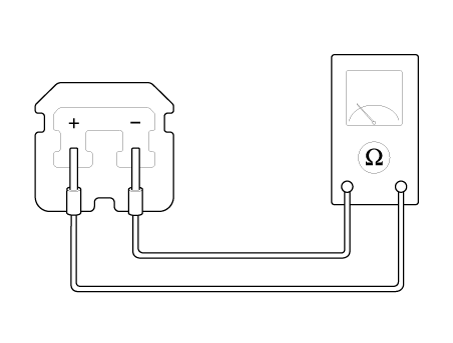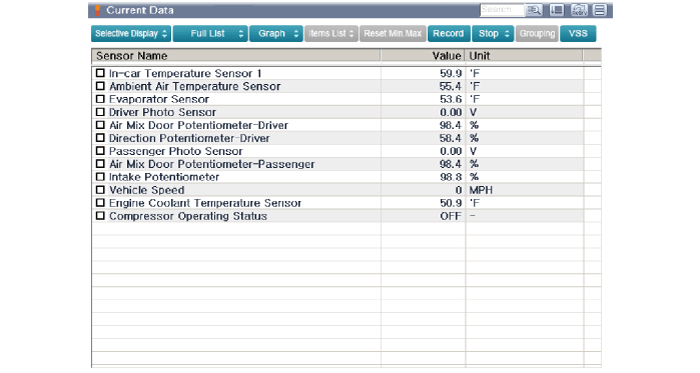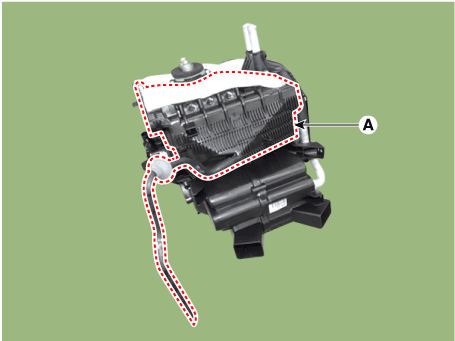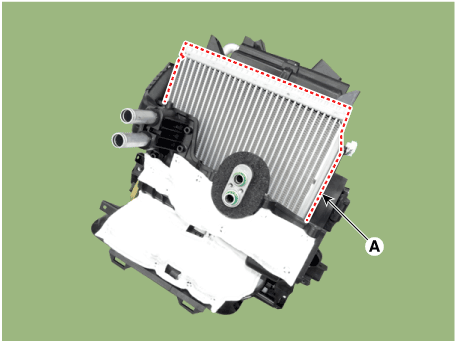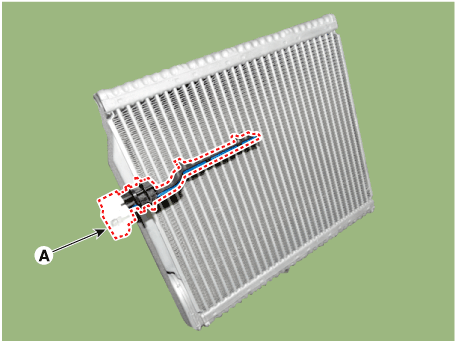Hyundai i-30: Air Conditioning System / Evaporator Temperature Sensor
Hyundai i30 (PD) 2018-2025 Service Manual / Heating, Ventilation and Air Conditioning / Air Conditioning System / Evaporator Temperature Sensor
Description and operation
| Description |
The evaporator temperature sensor will detect the evaporator core temperature
and interrupt compressor relay power in order to prevent evaporator from freezing
by excessive cooling. The evaporator temperature sensor has the Negative Temperature
Coefficient (NTC). Electrical resistivity of NTC will increase with decreasing
temperature and decrease with increasing temperature.
Repair procedures
| Inspection |
| 1. |
Turn the ignition switch OFF.
|
| 2. |
Disconnect the evaporator temperature sensor connector.
|
| 3. |
Measure the resistance between terminal "+" and "-" of the evaporator
temperature sensor.
Specification
|
| Diagnosis With GDS |
| 1. |
The heating, ventilation and air conditioning can be quickly diagnosed
failed parts with vehicle diagnostic system (GDS).
※ The diagnostic system (GDS) provides the following information.
(1) Self diagnosis : Checking the failure code (DTC) and display.
(2) Current data : Checking the system input/output data state.
(3) Actuation test : Checking the system operation condition.
(4) Additional function : Other controlling such as he system option
and zero point adjustment.
|
| 2. |
Select the 'Car model' and the system to be checked in order to check
the vehicle with the tester.
|
| 3. |
Select the 'Current data' menu to search the current state of the input
/ output data.
The input / output data for the sensors corresponding to the Evaporator
Temperature Sensor can be checked.
|
| Replacement |
| 1. |
Disconnect the negative (-) battery terminal.
|
| 2. |
Remove the heater and blower unit from the crash pad after loosening
the mounting nuts.
(Refer to Heater - "Heater Unit")
|
| 3. |
Remove the evaporator core cover (A) after loosening the mounting screws.
|
| 4. |
Pull out the evaporator core (A) from the heater unit.
|
| 5. |
Remove the evaporator temperature sensor (A) from the evaporator core.
|
| 6. |
To install, reverse the removal procedure.
|
 A/C Pressure Transducer
A/C Pressure Transducer
Description and operation
Description
The A/C Pressure Transducer (APT) converts the pressure value of high pressure
line into voltage value after measuring it...
 In-car Sensor
In-car Sensor
Description and operation
Description
The In-car air temperature sensor is built in the heater & A/C control unit.
The sensor contains a thermistor which measures the temperature of the inside...
Other information:
Hyundai i30 (PD) 2018-2025 Service Manual: Steering Column Shroud Panel
Components and components location Component Location 1. Steering column shroud lower panel 2. Steering column shroud upper panel Repair procedures Replacement [Steering column shroud upper panel] • Put on gloves to prevent hand injuries...
Hyundai i30 (PD) 2018-2025 Owner's Manual: Selective Catalytic Reduction
The Selective Catalytic Reduction (SCR) system is to catalytically convert NOx to Nitrogen and Water by using the reduction agent, the urea solution. Urea gauge The urea solution gauge indicates the approximate amount of remaining urea solution inside the urea solution tank...
Categories
- Manuals Home
- 3rd Generation i30 Owners Manual
- 3rd Generation i30 Service Manual
- Theft-alarm system
- Battery replacement
- Recommended lubricants and capacities
- New on site
- Most important about car
Tailgate
Opening the tailgate
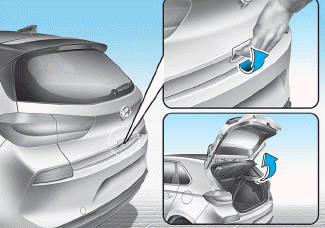
■ 5 Door, Wagon
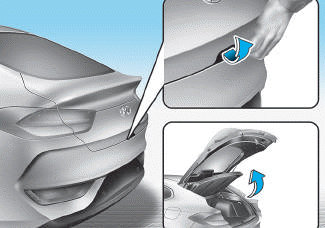
■ Fastback
Copyright © 2025 www.hi30.net

